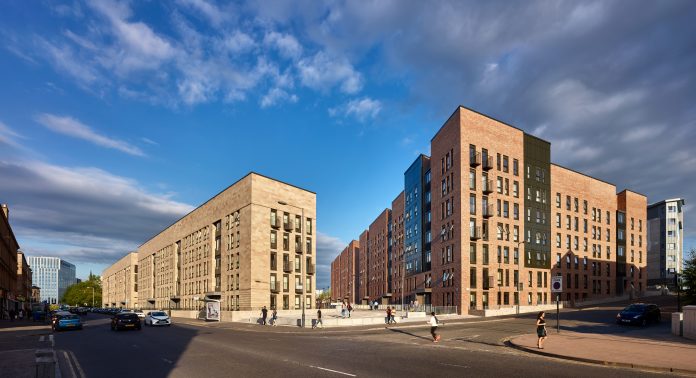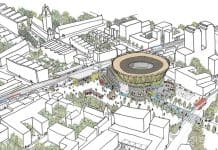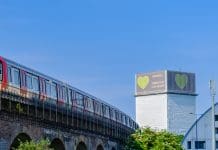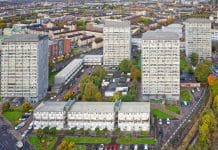Andrew Carpenter, chief executive of the Structural Timber Association, considers our ability to decarbonise the UK construction industry
The Committee on Climate Change has advised the government to use the coronavirus crisis as a catalyst for reducing the UK construction industry’s use of carbon and called for ministers to seize the opportunity to make the industry greener.
This is a massive opportunity for the UK to make a step-change – in just a few short weeks of lockdown, we can see how the climate can recover. The problem is clear, we have the technology – we just need to make better use of what we have.
The government’s recent consultation on extending the ban on combustible materials to more building types and lowering the height restriction in England from 18m to 11m closed on 25 May and we are awaiting the outcome. But it is clear that the UK is out of step with the approach being taken by leading economies in Europe as evidenced by the actions of President Macron, who has ruled that all new publicly-funded buildings in France should be delivered from at least 50% timber or other natural materials by 2022.
Agenda shift
In recent weeks, there has been a shift in the news agenda, clearly demonstrated by Roger Harrabin’s report for BBC News outlining the government’s plans to reduce the maximum height of timber-framed buildings from six storeys to four. Harrabin rightly pointed out that this action would contradict other advice to increase timber construction because trees lock up climate-heating carbon emissions.
But this will not only totally contradict other government advice to reduce carbon emissions but also flies in the face of the support that it has shown for offsite manufacturing to deliver the much-needed housing – the most proven of which are timber-based systems.
A blanket ban that is not based on building physics, test evidence or scientific facts is seen as a quick fix and, as a result, the UK could experience far-reaching implications for decades to come. The STA and other timber trade bodies are trying to help the government by providing scientific evidence on which to base decisions.
Guidance for timber frame buildings
We have also provided the results of our testing programme that has been carried out over the past two years as part of our continual development programme in collaboration with the Construction Scotland Innovation Centre, the University of Edinburgh and BRE to produce fire safety in use guidance for timber frame buildings.
In a recent article, Marcus Saunders from insurance broker and risk management expert Gallagher said of this testing programme: “This research has never been more relevant, as its publication has coincided with a noticeable sea-change in the attitude towards structural timber systems amongst real estate owners and developers in the UK.
“There is clear recognition that the real estate and UK construction market, one of the largest producers of CO2 in the UK, has a major challenge ahead in order to reach carbon zero by 2050 – and building in timber, due to its embodied carbon, has to play a huge role in reaching that target.”
The blanket banning of products does not address the Hackitt Review findings for more accountability and responsibility of how buildings are constructed. Nor does banning products improve build quality or clarify roles and responsibilities in the decision-making process. I could go on, but the point is made. Height restrictions are not a measurement of safety. Poor design results in inferior and not necessarily safe buildings – regardless of the technology from which they are constructed.
The optimum construction solution
Although we’ve had some challenging times, there is now real positivity around our sector. Timber systems are now acknowledged as the optimum construction solution in the battle to reduce carbon emissions. Trees are at the heart of the climate change debate – from the destruction of the Amazon rainforests to the use of timber frame as a replenishable and sustainable construction solution.
Once carbon sequestration was a natural phenomenon only understood by scientists but now that’s all changed and terms such as ‘carbon sink’ are commonly used. There are two ways to decrease CO2 in the atmosphere – either by reducing emissions, or by removing CO2 and storing it. Wood has the unique ability to do both. Trees extract CO2 from the atmosphere and hold it captive during its entire lifetime, even when it is reprocessed to form buildings. Commercially managed woodland locks down one-third more CO2 than wild forests – so the growing of commercial timber and use in UK construction is vital in the battle to reduce carbon emissions.
The government’s response to climate change has been to set net-zero carbon targets by 2050 but there is no ‘roadmap’ to navigate this journey if the most sustainable and replenishable of all building products is potentially banned. With as much as 7% of all global CO2 emissions coming from other less sustainable construction technologies, it is difficult to see how these targets will ever be met if these restrictions come into force.

Andrew Carpenter
Chief executive
Twitter: STAtimber
YouTube: Structural Timber











![[VIDEO] GBC network calls for boldness at COP29 Baku, Azerbaijan, where COP29 will take place and where the GBC Network have deirected their message](https://www.pbctoday.co.uk/news/wp-content/uploads/2024/11/iStock-513054348-1-218x150.jpg)


